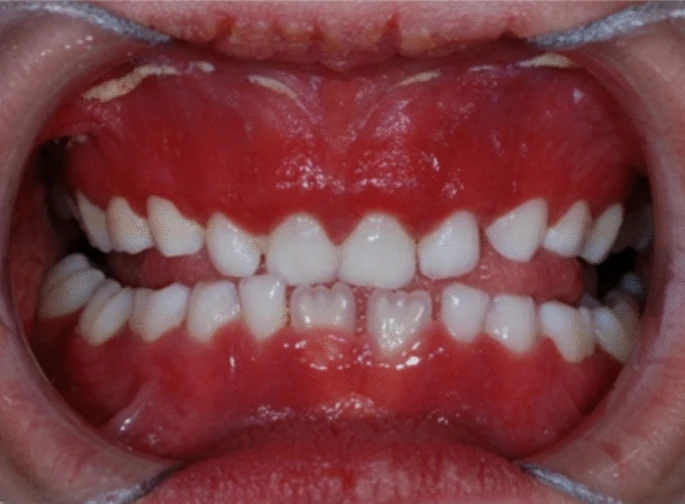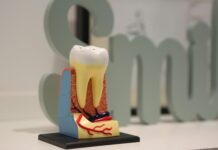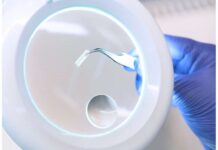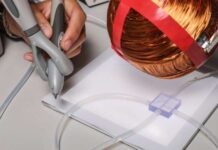Case Report
Keratitis-ichthyosis-deafness (KID) syndrome is a rare genetic condition caused by mutations in the GJB2 gene on chromosome 13. That codes for the gap junction protein connexin-26. The disorder is often characterized by increasing keratitis, sensorineural hearing loss, and skin abnormalities such as ichthyosis, baldness, and nail dystrophy. Approximately 100 cases have been identified worldwide, with the majority being sporadic and inherited in an autosomal dominant form.
Aside from its systemic aspects, KID syndrome is linked to greater susceptibility to bacterial, fungal, and viral infections. As well as an increased risk of developing squamous cell carcinoma of the skin and oral mucosa. Oral signs include fissured lips, inflammatory gingiva, and erosive lesions on the tongue and buccal mucosa . However, hypodontia has only been reported in two earlier studies. Notably, the most recent categorization of ectodermal dysplasias (EDs) does not include hypodontia as a characteristic of KID syndrome.
This case report describes a child with genetically proven KID syndrome and accompanying hypodontia. So contributing to a more comprehensive understanding of the condition’s oral phenotype.
Case Presentation
A 6-year-old girl born to unrelated Swedish parents was taken to the pediatric dentistry department for an examination of gum bleeding and oral discomfort. A dermatological team had earlier diagnosed the patient with KID syndrome based on clinical evidence as well as genetic confirmation of a GJB2 mutation.
The family history was noteworthy: the father had an undetected dermatological disorder similar to Darier’s disease and ichthyosis, while the mother had psoriasis. (Fig. 1) Clinical observations included severely dry, fissured lips with angular cheilitis; red, inflammatory oral mucosa and gingiva with evident popular alterations; bleeding gingiva and poor oral hygiene; and early mixed dentition with normally shaped and sized teeth.
Intraoral and panoramic radiographs revealed two carious primary molars, the absence of both upper second premolars, and the absence of all four second permanent molars (a total of six congenitally missing teeth).
Treatment
The treatment, which was performed under general anesthesia, involved a thorough oral examination, sealant installation on permanent molars, and tooth extractions 54 and 64. The patient and parents received oral hygiene education, and an oral moisturizing gel (Proxident®) was introduced to reduce dryness. The histological study of the removed teeth indicated problems in enamel mineralization.
Biopsies of the oral tissues ruled out dysplasia, and microbiological tests for infections and fungus were negative. The patient was placed on a bimonthly follow-up regimen. Her dental health had greatly improved after a two-year follow-up, with no evidence of gingival bleeding or discomfort. A multidisciplinary dental team is presently preparing long-term care for the missing teeth.
Discussion
KID syndrome’s oral symptoms commonly include inflammation, erosive lesions, and lip fissuring. In this example, the occurrence of hypodontia (six congenitally absent permanent teeth) is very significant. Differential diagnoses such as Sjögren’s syndrome, plasma cell gingivitis, and orofacial granulomatosis were ruled out using histological and microbiological testing. A review of the literature uncovered two similar cases: McGrae described a 24-year-old lady with characteristics of KID syndrome and missing teeth suggestive of hypodontia, but no genetic evidence was offered.
Despite these observations, the most recent classification does not include hypodontia as a distinguishing characteristic of KID syndrome. However, considering that EDs involve at least two ectodermal structures (e.g., teeth, hair, nails, and sweat glands), including hypodontia appears to be warranted based on mounting clinical evidence. This example emphasizes the significance of conducting full oral exams, including radiographic assessments, on all individuals with KID syndrome. Early detection of dental abnormalities can help guide long-term treatment planning and management. Pediatric dental professionals should be an essential part of the interdisciplinary treatment team.




